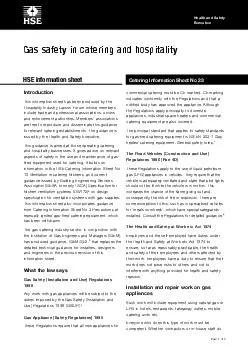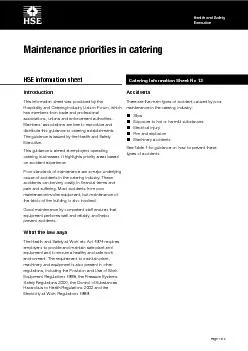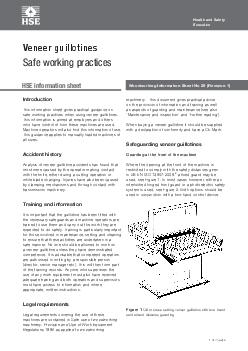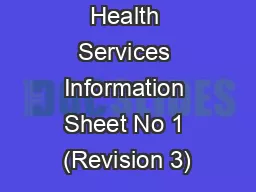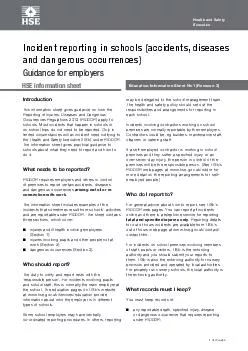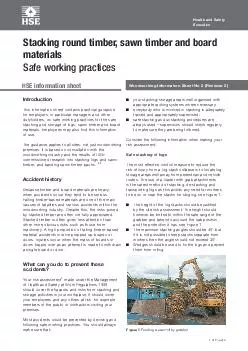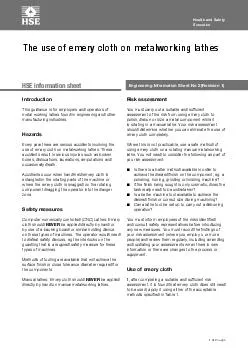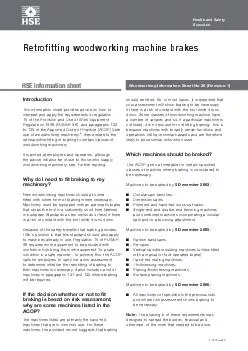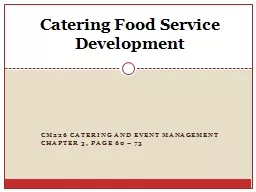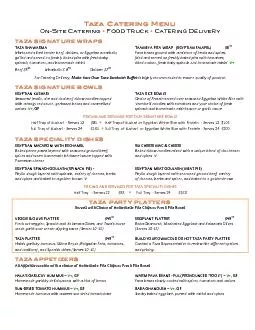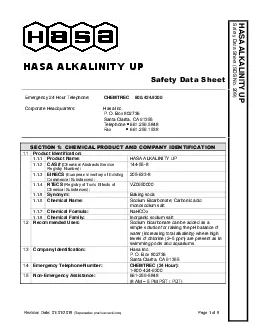PDF-Catering Information Sheet No 23 (Revision 2)
Author : olivia-moreira | Published Date : 2016-06-08
1 of 5 pages HSE information sheet Gas safety in catering and hospitality Introduction This information sheet has been produced by the Hospitality and Catering Industry
Presentation Embed Code
Download Presentation
Download Presentation The PPT/PDF document "Catering Information Sheet No 23 (Revisi..." is the property of its rightful owner. Permission is granted to download and print the materials on this website for personal, non-commercial use only, and to display it on your personal computer provided you do not modify the materials and that you retain all copyright notices contained in the materials. By downloading content from our website, you accept the terms of this agreement.
Catering Information Sheet No 23 (Revision 2): Transcript
1 of 5 pages HSE information sheet Gas safety in catering and hospitality Introduction This information sheet has been produced by the Hospitality and Catering Industry Liaison Forum whose members. 123 It provides advice for woodworking employers It explains what the health and safety risks from wood dust are and how they can be controlled It will also help employers to ask the right questions when dealing with local exhaust ventilation LEV de Members associations are free to reproduce and distribute this guidance to catering establishments The guidance is issued by the Health and Safety Executive This guidance is aimed at employers operating catering businesses It highlights priority are 1 of 3 pages HSE information sheet Veneer guillotines Safe working practices Introduction This information sheet gives practical guidance on safe working practices when using veneer guillotines. Th 1 of 7 pages HSE information sheet Reporting injuries, diseases and dangerous occurrences in health and social care Guidance for employers Introduction This information sheet gives guidance on how th 1 of 4 pages HSE information sheet Incident reporting in schools (accidents, diseases and dangerous occurrences) Guidance for employers Introduction This information sheet gives guidance on how the 1 of 5 pages HSE information sheet Stacking round timber, sawn timber and board materials Safe working practices Introduction This information sheet contains practical guidance for employers, in pa 1 of 2 pages The use of emery cloth on metalworking lathes Introduction This guidance is for employers and operators of metal working lathes found in engineering and other manufacturing industries. 1 of 4 pages HSE information sheet Retrofitting woodworking machine brakes Introduction This information sheet provides advice on how to interpret and apply the requirements of regulation 15 of the Double click . on the SimEHR. icon on the. Desktop to . Log in to the . Simlab . Hospital EHR. This is the SimLab Hospital Homepage. Here, students are required to choose the correct unit of their patient. . Ideas and techniques to help support your child to achieve their potential.. PREPARING FOR EXTERNAL EXAMINATIONS 2017. Examination Advice. Your child will need to:. Check their . timetable. . Exams . Chapter . 3, page 60 – 73. Catering Food Service Development . CHAPTER OBJECTIVES. Describe the initial concepts and activities related to new business development.. Explain a market survey profile, the development of a target market, an analysis of the competition and feasibility.. General Revision Top Tips for successful revision Mrs Bellers Mnemonics Mnemonics use the initial letters of a group of words to help remember them in order They are really good for remembering sequenced =''.)�?@A))))))!'"&-"++*�))?B0$,1'%)�C %,-+$2*0!-2$&#x -2 ;%;,$89?$/1!!!!!!&#x -2 ;%;,$&#x -2 ;1$+&#x -2 ;;($&&#x -2 ;-*!!!!J'()+'%&$+*)*$77'#'().2#)02:#*);$&0)*6$,'*)"%()9'4'&"-+ Emergency 24 Hour Telephone CHEMTREC 8004249300Corporate Headquarters Hasa Inc P O Box 802736 Santa Clarita CA 91355 Telephone 6612595848 Fax 6612591538 n11Product Identification111Pro
Download Document
Here is the link to download the presentation.
"Catering Information Sheet No 23 (Revision 2)"The content belongs to its owner. You may download and print it for personal use, without modification, and keep all copyright notices. By downloading, you agree to these terms.
Related Documents

